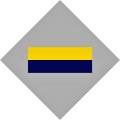Kokoda 75



Background
The first shots between the Japanese and Australian and Papuan forces in the Kokoda Trail campaign were exchanged on 24 July 1942. A month later, the 39th Battalion of the Australian militia, had taken up position at Isurava on the track over the Owen Stanley Mountains that runs between Kokoda and Port Moresby. After taking Kokoda on 8 August, the Japanese were consolidating their position, trying to establish the size of the force ranged against them, and somewhat distracted from 7 August by the landings by US marines on Guadalcanal in the Solomon Islands. The 39th had been at Isurava for two weeks patrolling and training under their new commander, Lieut. Col Ralph Honner. They had already been in the area since mid-July, initially sent to defend the airfield at Kokoda. As militia men, they were intended to be used on Australian soil, for home defence. Their role was meant to be garrison duties at Port Moresby, but they were now in the process of learning soldiering on the job. However, 6 weeks at the end of a very long supply line was beginning to tell, and the 39th was in ‘poor shape’.
On 16 August, as Ralph Honner took over the 39th, the 21st Brigade: comprised of 2/27 held in reserve, 2/16 following, and 2/14 leading the way, under Brigadier Arnold Potts, began the journey from Ower’s Corner, 30 km out of Moresby, over the Owen Stanley’s, to reinforce the situation. They were physically at the peak of fitness, experienced in battle and eager to get among the Japanese and sort them out. There was, however, a third protagonist in this fight. The conditions in which it took place.
THE TRACK
The Track has been famously described by Kingsley Norris, senior medical of the 7 Division thus: “Imagine an area of approximately one hundred miles long. Crumple and fold this into a series of ridges, each rising higher and higher until seven thousand feet is reached, then declining in ridges to three thousand feet. Cover this thickly with jungle, short trees and tall trees, tangled with great, entwining savage vines. Through an oppression of this density, cut a little native track, two or three feet wide, up the ridges, over the spurs, round gorges and down across swiftly-flowing, happy mountain streams. Where the track clambers up the mountain sides, cut steps – big steps, little steps, steep steps – or clear the soil from the tree roots.”… “About midday, and through the night, pour water over the forest, so that the steps become broken, and a continual yellow stream flows downwards, and the few level areas become pools and puddles of putrid black mud. In the high ridges above Myola, drip this water day and night over the track through a foetid forest grotesque with moss and glowing phosphorescent fungi. Such is the…route for ten days to be covered from Ower’s Corner to Kokoda.’’
By the time the 2/14 commander, Lt Col Arthur Key reached Myola he knew he had a problem of immense proportions. At that time there were about 1100 fighting men heading up the track, who would have to be kept supplied with food and ammunition, but with a 6-day trek to get to Myola, and still 2 days short of Isurava. Key held the 2/14 at Myola for a few days while he tried to get something sorted. Air drops into Myola were a solution, but initially, much was lost, until successful techniques were developed. Getting the wounded out was going to prove even more challenging.



THE BATTLE OF ISURAVA
On 26 August, the four-day battle at Isurava began, the 39th holding, while the 2/14 arrived, company by company and took up position. From the first. the battalion was fighting on territory not of their own choosing, with the constant threat of encirclement. The 2/16 were deployed across the Eora Creek valley at Abuari to stop any Japanese flanking movements there. The fighting intensified over the course of the four days, until, on 29th the attacks were so fierce that there was a strong chance of C Company being overrun. It was at this point that Bruce Kingsbury made his valiant charge, firing the Bren gun from his hip through terrific machine-gun fire and clearing a path through the enemy, only to be cut down by a sniper’s bullet when his patrol paused to regroup. For this he was awarded the Victoria Cross.
But his was not the only gallant action on that day. Charlie McCallum, covering his platoon’s withdrawal further up the hill, was awarded the Distinguished Conduct Medal, Lt ‘Mocca’ Treacy and Lt George Pearce were awarded the Military Cross and Cpl Lindsay ‘Teddy’ Bear, Albert ‘Snowy” Nielson and Harold Wakefield, the Military Medal. Many years later, Alan Avery, himself an MM from the Syrian Campaign, put the action into perspective: Everyone who was up there should have got a medal that day. On 30th August, realising they were outgunned and outnumbered, the decision to withdraw was taken, as Brigade HQ at Alola had also come under fire. Unfortunately, in the process, 172 men of the 2/14 were cut off. Many re-joined the battalion over the following days, but many remained lost for weeks, and some never returned, including the commanding officer, Lt Col Arthur Key.
Help the legacy of the 2/14 last
Become a Member Today
Family of 2/14 Battalion veterans are welcome to join the association to learn, connect, and support one-another to keep the ANZAC spirit alive.
